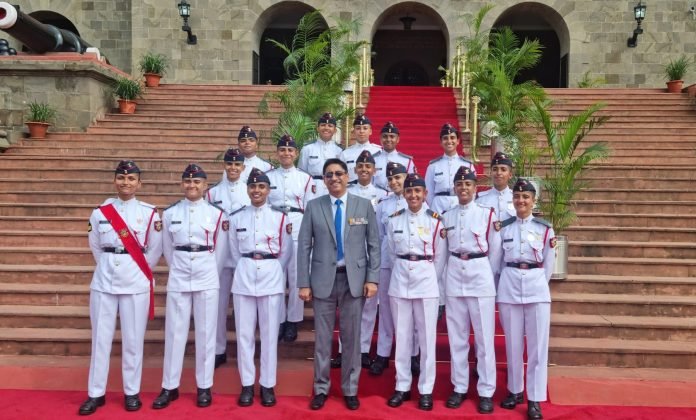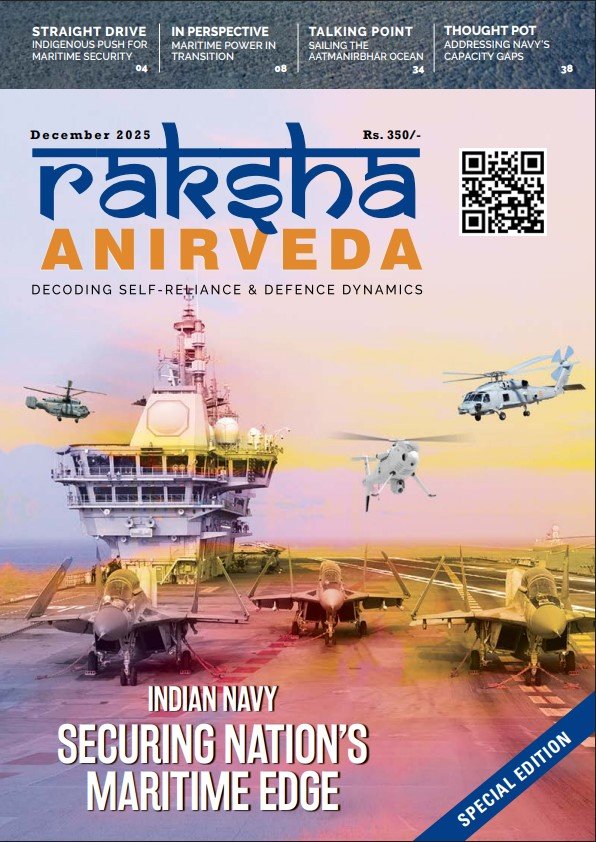On May 30, 2025, a moment of quiet revolution unfolded on the drill square of the National Defence Academy (NDA), Khadakwasla. As the sun rose over the Sahyadri Ranges, it bore witness not just to a time-honoured tradition, the Passing Out Parade, but to a defining chapter in India’s military history: a full cohort of women cadets passing out after completing their three-year tri-service training.
Now, a month later, the impact of that parade continues to ripple across strategic, institutional, and societal domains. This was not just a military event. It was a statement of national resolve, reaffirming India’s commitment to gender inclusivity, meritocracy, and operational excellence.
A Retrospective Salute: What May 30 Meant
The passing out of these women cadets in May 2025 was not merely ceremonial, it was a culmination of courage, resilience, and systemic evolution. These women were part of the pioneering batches inducted into the NDA after the Supreme Court’s landmark directive in the Public Interest Litigation titled Kush Kalra v. Union of India (2021), which upheld gender equality in military training and commissioning pathways.
Now commissioned as officers, these women have already begun to redefine the contours of leadership in uniform. From excelling in drills and academics to participating in field training alongside male counterparts, they have demonstrated that grit, intellect, and patriotic valour are gender-neutral traits. Their presence on the parade ground wasn’t just about a batch graduating; it was about India turning a page in defence readiness, one where diversity strengthens doctrine and inclusivity sharpens strategy.
Modern security challenges are increasingly hybrid, spanning cyber warfare, climate-induced displacement, psychological operations, and space security. These are arenas that demand diverse skillsets.
Inclusion: The Bedrock of a Resilient Defence Ecosystem
Inclusion is not an act of charity. It is a strategic imperative in 21st-century warfare. Modern security challenges are increasingly hybrid, spanning cyber warfare, climate-induced displacement, psychological operations, and space security. These are arenas that demand diverse skillsets, collaborative leadership, and the ability to navigate complexity with compassion and clarity.
By integrating women from the NDA level onward, India has infused its officer corps with expanded perspectives and untapped potential. Studies from NATO, Israel, and Scandinavian defence forces have consistently shown that mixed-gender teams often outperform homogeneous groups in innovation, crisis response, and morale.
In short, the inclusion of women doesn’t dilute military efficiency; it amplifies it.
From Ground Zero to the Command Room: A Pipeline Being Built
The induction of women cadets into the NDA was not an end in itself; it is the beginning of building a robust leadership pipeline across all branches of the Armed Forces. Until now, women in the Services were often limited to specific roles, with fragmented career trajectories and curtailed command opportunities. That is changing.
The NDA pass-out marks a systematic shift: these women are not mere participants; they are now poised to become platoon commanders, company leaders, strategic planners, and, in time, perhaps even service chiefs.
Importantly, this institutional evolution has occurred without compromising the rigor of training or operational standards. The NDA has maintained its elite benchmark, and these women have matched it stride for stride, proving beyond doubt that equal opportunity is not a concession; it’s a catalyst.
Societal Signals and Strategic Shifts
The visual of women marching in the NDA’s famed uniform on May 30 sent a message far beyond defence circles. It signalled to every Indian girl that a military mindset knows no gender, and to every Indian institution that inclusivity is not a threat to tradition, but a tribute to its timeless values.
In a time when national security must also be about societal harmony, the integration of women into elite military institutions like the NDA reinforces a broader narrative that a strong India is an inclusive India.
Studies from NATO, Israel, and Scandinavian defence forces have consistently shown that mixed-gender teams often outperform homogeneous groups in innovation, crisis response, and morale.
It also reflects the maturity of our Armed Forces. Not content with being merely defenders of territory, they have now become torchbearers of national transformation, showing the way in gender equity, professionalism, and modern leadership.
The Road Ahead: Challenges and Responsibilities
Of course, the road ahead is not without obstacles. Logistics, command dynamics, infrastructure, and perception gaps will all demand continued focus. But those are operational issues, not ideological reasons to slow progress.
The real challenge lies in ensuring that this momentum does not plateau. That these women, now commissioned, are offered equal opportunities for promotions, postings, and specialised training. That the Services begin to reflect the full potential of India’s demographic dividend.
Additionally, we must invest in gender-sensitive command training, promote mentorship networks for female officers, and deepen research and feedback mechanisms to support evidence-based integration policies.
A Legacy in the Making
One month after that historic parade, we are no longer simply celebrating a ceremonial breakthrough; we are witnessing the emergence of a legacy. The NDA women cadets of 2025 are not anomalies. They are pathfinders. Their success is a mirror held up to India’s Armed Forces, showing both their readiness to evolve and their capacity to inspire. They march not just for themselves but for all those who believe in a military that reflects the spirit of the Constitution it protects.
Inclusion is no longer the future. It is the present, in boots and berets, marching with pride and purpose.
Jai Hind!
The writer is a legal academic with a PhD in Law, working at the intersection of gender justice, public policy, and national security. She is presently serving as Assistant Professor (Grade II) in Law at Amity University, Noida. Her writings aim to integrate inclusive governance with strategic policymaking. She regularly writes on national defence, internal threats, and gendered dimensions of security. She can be reached at sunandini.arun@gmail.com. The views expressed are personal and do not necessarily carry the views of Raksha Anirveda






